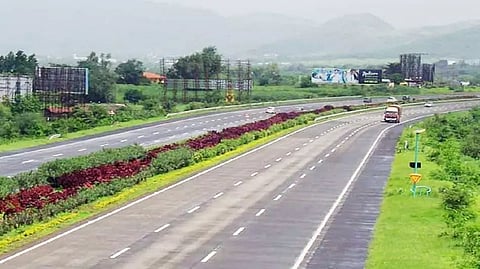
- Home
- Live Blog
- Breaking News
- Top Headlines
- Cities
- NE News
- Sentinel Media
- Sports
- Education
- Jobs

Representative image
Staff Reporter
Guwahati: The Union Government has asked the Assam and other state governments to use Whitetopping Technology for rehabilitation and strengthening of National Highways (NHs). This technology will help extend the longevity of the NHs, in addition to other advantages.
For the purpose of using this Whitetopping Technology, the Ministry of Road Transport & Highways (MoRTH) has issued a circular to the states. The circular was also addressed to the Chairman of the National Highways Authority of India (NHAI), Managing Director of National Highways Infrastructure Development Corporation Ltd. (NHIDCL), and Chief Engineers of the Public Works Departments (PWD), including that of Assam, among others.
According to the circular, MoRTH said, “India has presently about 1.46 lakh km length of National Highways (NH) network. As we are building more and more 2/4/6/8-lane National Highways and Expressways, the quantum of aged assets is increasing, which warrants rehabilitation to extend its life further. Flexible pavement constitutes the most important and largest component of the ageing NH network. There are several rehabilitation/strengthening techniques/treatments available for flexible pavement, and Whitetopping is one of them.”
MoRTH defined Whitetopping Technology (WT) as a concrete overlay on the top of an existing in-service bituminous pavement. A few advantages of WT are stated as follows: Extends the lifespan of the pavement by 20-25 years; lowers life-cycle costs when compared with bituminous overlay; durable wearing course in high rainfall regions; as concrete is relatively light in colour, concrete surface is more reflective to light, absorbs less heat, and reduces the urban heat island effect. Improved reflection of lights from vehicles enhances safety, lowers the energy requirement of external lighting, lowers the contribution to heat in the environment, and lowers fuel consumption on concrete roads when compared to bituminous roads.
The Indian Roads Congress has published IRC:SP:76, “Guidelines for Conventional and Thin Whitetopping,” wherein there are three types of Whitetopping, namely Conventional Whitetopping, Thin Whitetopping (TWT), and Ultra-Thin Whitetopping (UTWT). It is mentioned that unbonded conventional Whitetopping is appropriate for badly damaged bituminous pavement, and it should be designed and constructed similar to conventional concrete pavement in accordance with IRC:58 and IRC:15. Further, it is specified that UTWT is not an appropriate application for National Highways works. Thus, the most suitable Whitetopping Technology for NHs is Thin Whitetopping (TWT).
Assam has 4,077 km of NH. Of this, 406 km is less than two lanes, 2,541 km is two lanes, and 1,130 km is four lanes and above. Work on NHs is carried out by the Assam PWD (NH division), NHAI, and NHIDCL.
The condition of NHs in Assam is not very good, especially during the rainy season when rainwater inundates large swathes of the NHs, damaging the surface and making them tough to traverse.
Also watch: